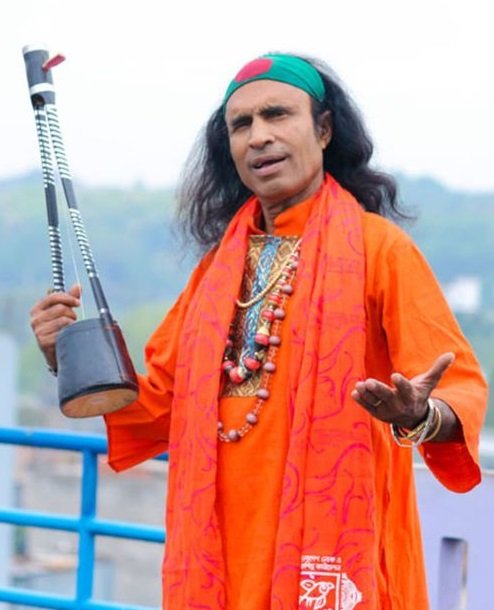Bangla Folk Songs: A Tapestry of Tradition, Culture, and Identity
Bangla folk songs, known as "Lokgeeti" in Bengali, are a rich tapestry of oral traditions that reflect the cultural heritage and everyday lives of the people of Bengal. These songs have been passed down through generations, sung by folk artists known as "Bauls," "Bhatiyali," "Bhawaiya," and others, who travel from village to village, spreading tales of love, nature, spirituality, and social issues.

Chapter 1: Introduction to Bangla Folk Songs
Bangla folk songs are deeply rooted in the rural traditions of Bengal, encompassing a wide variety of musical styles and themes. They are typically sung in regional dialects, capturing the nuances of everyday life, celebrations, rituals, and struggles of the common folk. These songs serve as a means of communication, storytelling, and cultural preservation, passed down orally from one generation to the next.
Chapter 2: Types of Bangla Folk Songs
2.1 Baul Geeti
The Bauls are mystical minstrels of Bengal, known for their philosophical and spiritual songs. Baul Geeti often explores themes of divine love, spiritual enlightenment, and the quest for inner truth. Their music is characterized by simple melodies, repetitive lyrics, and the use of traditional instruments like the ektara (one-stringed instrument) and dubki (small drum).
2.2 Bhatiyali Geeti
Originating from the riverine regions of Bengal, Bhatiyali geeti reflects the life and struggles of boatmen and fishermen. These songs are sung in the backdrop of rivers and water bodies, capturing the rhythm of oars and the flow of water. Bhatiyali geeti often evokes themes of longing, separation, and the beauty of nature, resonating deeply with the riverine culture of Bengal.
2.3 Bhawaiya Geeti
Hailing from North Bengal, Bhawaiya geeti is performed by the Bhawaiya community, known for their distinct vocal style and lively tunes. These songs celebrate love, nature, and the everyday joys and sorrows of rural life. Bhawaiya geeti is characterized by its fast-paced rhythm, melodic improvisations, and the use of traditional instruments like the dotara (a two-stringed instrument) and dhol (drum).
2.4 Jhumur Geeti
Jhumur geeti is popular in the tribal regions of Bengal, particularly among the Santhal and Munda communities. These songs are accompanied by energetic dance performances and convey themes of nature worship, harvest festivals, and tribal traditions. Jhumur geeti is characterized by its lively beats, repetitive refrains, and the use of instruments like the mandar (a type of drum) and flute.
Chapter 3: Themes and Messages
Bangla folk songs encompass a wide range of themes and messages that resonate with the everyday lives of rural communities:
3.1 Love and Romance
Many folk songs celebrate love in its various forms – romantic love, divine love, and love for nature. These songs often depict the joys and sorrows of lovers, their longing, and their union or separation.
3.2 Nature and Environment
Nature plays a significant role in Bangla folk songs, reflecting the deep connection between rural communities and their natural surroundings. Songs about rivers, forests, seasons, and agricultural activities are common, highlighting the importance of nature in everyday life.
3.3 Social Issues and Commentary
Folk songs also serve as a platform for social commentary, addressing issues such as poverty, injustice, and societal norms. They provide a voice to marginalized communities and raise awareness about their struggles and aspirations.
3.4 Spirituality and Mysticism
Many Bangla folk songs explore themes of spirituality, mysticism, and the search for inner truth. Songs by Bauls, in particular, delve into philosophical questions, the nature of existence, and the path to spiritual enlightenment.
Chapter
4: Instruments and Musical Styles
4.1 Traditional Instruments
Bangla folk songs are often accompanied by various traditional musical instruments that enhance their rhythmic and melodic qualities. These include:
• Ektara: A one-stringed instrument played by Bauls and other folk musicians.
• Dotara: A two-stringed instrument used in Bhawaiya and other folk genres.
• Dhol: A large drum played in various folk performances, providing a rhythmic base.
• Flute: Used in Jhumur geeti and other tribal songs to create melodious tunes.
• Harmonium: A keyboard instrument that provides harmonic support in folk music ensembles.
4.2 Musical Styles
Each type of Bangla folk song has its own distinct musical style, characterized by specific rhythms, vocal techniques, and instrumental accompaniment. For example:
• Baul geeti is characterized by its contemplative melodies, repetitive refrains, and the use of metaphoric language.
• Bhatiyali geeti features flowing melodies that mimic the movement of water, accompanied by rhythmic percussion.
• Bhawaiya geeti is known for its lively tempo, improvisational vocal style, and energetic dance movements.
• Jhumur geeti combines lively beats with spirited dance performances, reflecting the vibrant culture of tribal communities.
Chapter 5: Cultural Significance and Preservation Efforts
Bangla folk songs hold immense cultural significance as repositories of Bengali heritage and traditions. They provide insights into the history, beliefs, and values of rural communities, offering a glimpse into a way of life that is deeply rooted in the land.
5.1 Cultural Identity
Folk songs play a crucial role in shaping the cultural identity of Bengali people, fostering a sense of belonging and pride in their linguistic and regional heritage. They are an integral part of festivals, rituals, and social gatherings, bringing communities together in celebration and solidarity.
5.2 Preservation Efforts
In recent years, there has been a renewed effort to preserve and promote Bangla folk songs amidst the rapid urbanization and modernization of Bengal. Cultural organizations, folk music festivals, and educational institutions are actively involved in documenting, archiving, and revitalizing traditional folk songs.
5.3 Contemporary Adaptations
While preserving their traditional essence, Bangla folk songs have also undergone adaptations to cater to modern audiences. Contemporary artists and musicians incorporate elements of fusion, experimentation, and digital media to reach a wider audience while staying true to their folk roots.
Conclusion
Bangla folk songs, with their rich diversity of themes, musical styles, and cultural expressions, continue to resonate with audiences across generations. They serve as a timeless link to Bengal's rural traditions, offering a window into the lives, dreams, and aspirations of its people.